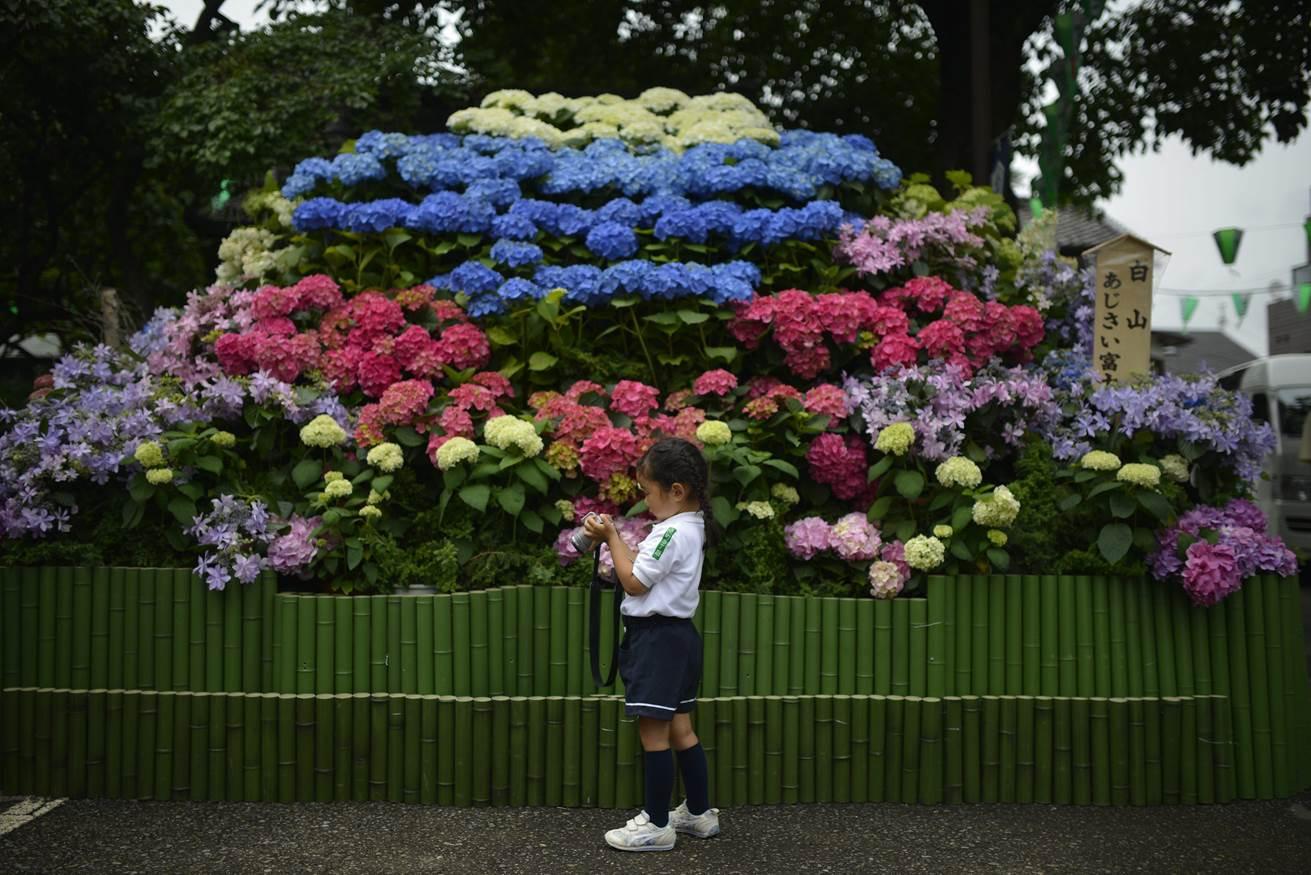I am always aware that not all gardeners are lucky enough to have a garden but have to suffice with a terrace or patio or even just a wall to hang pots from as is found in Southern Spain where the famous patios of potted flowering plants are part of a tourist route. Here Geraniums really do well and I find that literally any little cutting just stuck in a pot will take root. Unfortunately, we suffer that little grey butterfly that lays its eggs and the hatching larvae burrows into the stems of the Geranium. You are aware of this when the flower stem rots back and there are little black holes near the leaf joints. Cutting the stems back to below the black holes can frequently save the plant but it’s best to catch the butterfly if you can before it lays its eggs. There is a pesticide available for just this plague available from the garden shops and Co-op. There are those who believe in the vinegar mixture but it’s up to each one of us how we protect our plants from plagues.
Now there are other potted plants that many of us long for because we always had them back home, one of these must surely be the Hydrangea and this can be a little troublesome here. It is pretty obvious that this shrub really isn't very happy in the soil here in Majorca. The truth of the matter lies in the composition of the soil so to make a Hydrangea happy we must provide it with all it wants and that means starting from the bottom or simply put, the soil it prefers. Here is where the patio gardener can come into his own because one can fill a pot with soil from a sack or compost heap without the dreaded calcium that is found in the soil here. Once well established, you can have your Hydrangea forever. It will of course need looking after and you can then decide what colour you want. They mostly start off pink but we all long for a beautiful blue one so we have to make that ourselves. A lot of this will depend on what you feed and water it with. If you are lucky enough to have a rainwater tank under the house, then that really is the ideal water and when it does rain make sure the plant stands were it really will get wet. As to the feeding there are fertilizers just for Hydrangeas known as Hortensias in Spanish. The fertilizer is called 'abono azulador de Hortensias'. This fertilizer should be either added to the watering or sprinkled over the soil every couple of weeks from now right through until November. It helps avoid the leaves turning yellowish and will colour the flowers blue. One of the components of the fertilizer is iron and there is an old fashioned method of producing iron for Hydrangeas which is to put a handful of old rusty nails or some such in the bottom of the pot which will rust and produce the iron. The world is full of all these old wives tales so it is up to you if you believe them or not!
And now to the weeds, there are those who bemoan the invasion of weeds in the garden. The actual definition of a weed is 'a plant growing in the wrong place!' There are those weeds like Oxalis that only thrive in the winter, thank goodness, they simply cover the lawn not allowing any light get to the grass at all yet along the roadsides and hedgerows the brilliant yellow of this weed is a welcome colour in the winter and spring months, all dried up and gone now. Into which category do wild orchids fit I ask myself, I have a patch that comes up every spring increasing from a couple of flowering giant orchids a few years ago to now nearly a hundred flower spikes with a delicate fragrance of their own. I also have masses of wild gladioli and real buttercups all of which are in the lawn before it starts to grow again about now, so do we call them weeds? My original Jonquils grew wild all over the land which is where we live now I rescued a few bulbs before all the houses were built 45 years ago, these now fill another patch of lawn all through the winter and increase in number every year. So, what is a weed?
We haven't mentioned the vegetable garden this week but that should really be thriving now, remember to water well every few days, as I have said before, that little gully along the rows to be flooded every few days is far better than sprinkling and certainly never sprinkle in the heat of the day other than the Bermuda grass lawn that thrives with that method of watering. Keep popping a few seeds or seedlings into the vegetable patch every few weeks to be sure to have a constant supply of your favourite vegetables. Potatoes that take longer before you are able to dig them up will probably supply you with about three crops a year planted in a different patch each time of course. Just remember 'crop rotation'. Yes it is a growing season all year round in our Mediterranean climate which, we are lucky enough to enjoy even though it produces plenty of work just to keep it tidy.


No comments
To be able to write a comment, you have to be registered and logged in
Currently there are no comments.